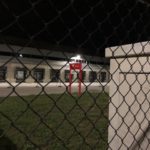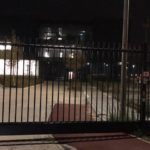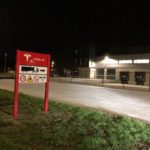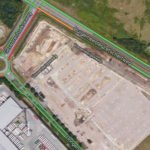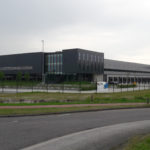
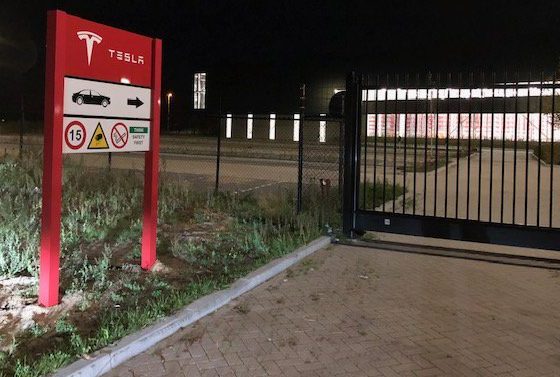
News
Tesla’s new Tilburg site hints at new storage and parts center ahead of Model 3 EU push
Tesla appears to be expanding its activities in Tilburg, Netherlands, as the company has acquired a third major facility in the region. The yet-to-be announced complex spans 387,500 square feet (36,000 square meters) and is located at Vossenbergseweg, close to Tesla’s assembly plant and delivery center.
The electric car maker’s activities were initially shared online by Tesla owner-enthusiast Hans Noordsij, who noted that he was tipped off about the facility recently. Tesla has so far been tight-lipped about the purpose of the new site, with local news publication AD.nl reportedly being unable to get information about the new facility from the electric car maker. In a statement to Teslarati, Hans noted that when he inquired about the new site during a service appointment for his Model S, Tesla’s staff at the service center also declined to confirm the purpose of the facility.
- Tesla’s new Tilburg, NL site. [Credit: Hans Noordsij/Twitter]
- Tesla’s new Tilburg, NL site. [Credit: Hans Noordsij/Twitter]
- Tesla’s new Tilburg, NL site. [Credit: Hans Noordsij/Twitter]
- Tesla’s new Tilburg, NL site. [Credit: Hans Noordsij/Twitter]
Tesla’s new Tilburg, NL site. [Credit: Hans Noordsij/Twitter]
While the nature of the new site remains unannounced, there seems to be a good chance that the 387,500-square-foot facility would be utilized to prepare for the likely influx of vehicles to the region resulting from the upcoming Model 3 push. Considering that Tesla has an assembly and delivery plant, as well as a sales and service center, in Tilburg, the new facility could serve as a location where parts for vehicles would be stored and distributed. Hans, for his part, noted that Tesla already adopts this strategy today, but on a far smaller scale.
As more electric cars saturate the NL and nearby areas, the company would need a stronger service system that can cater to the growing fleet. This is particularly true with regards to the impending arrival of the Model 3, which is expected to begin deliveries in the region sometime next year. Having a dedicated site for electric car parts distribution would ultimately help Tesla in its push to improve the ramp of its in-house service centers, which are capable of addressing repairs in short periods of time.
In some regions such as Norway, after all, Tesla is currently struggling to expand its service facilities, resulting in some electric car owners experiencing long wait times before even minor repairs are addressed. Elon Musk personally addressed this on Twitter last July, stating that owners are “right to be upset with Tesla” considering the company’s incapability to have vehicles repaired in a timely manner.
- The site of Tesla’s new facility in Tilburg, NL. [Credit: Hans Noordsij/Twitter]
- Tesla’s new Tilburg site. [Credit: Ben Ackermans/BD]
Tesla’s third Tilburg, NL site could play a vital role in the upcoming Model 3 push in the region.
If Tesla’s initiatives in the United States are any indication, though, the company appears to have found a solution to drastically reduce the waiting times for vehicle repairs. Through the use of in-house service centers, Tesla is now starting to attain shorter turnaround times for vehicles’ service and repairs. One such instance was shared earlier this month by the owners of the LikeTesla YouTube channel, whose Model 3 was involved in an accident. Utilizing an in-house service center, the Model 3 owners were able to get their electric sedan fully repaired — complete with a new bumper, a new headlight, a new front fender — in just 25 hours.
Tesla does not intend to stop there. In an update on Twitter last August, Elon Musk noted that Tesla is aiming to achieve same-day body repairs using pre-stocked parts at service centers. With this in mind, Tesla’s new Tilburg facility could be a sign that quicker turnaround times for vehicle repairs in the region could be just around the corner.

News
Tesla China quietly posts Robotaxi-related job listing
Tesla China is currently seeking a Low Voltage Electrical Engineer to work on circuit board design for the company’s autonomous vehicles.

Tesla has posted a new job listing in Shanghai explicitly tied to its Robotaxi program, fueling speculation that the company is preparing to launch its dedicated autonomous ride-hailing service in China.
As noted in the listing, Tesla China is currently seeking a Low Voltage Electrical Engineer to work on circuit board design for the company’s autonomous vehicles.
Robotaxi-specific role
The listing, which was shared on social media platform X by industry watcher @tslaming, suggested that Tesla China is looking to fill the role urgently. The job listing itself specifically mentions that the person hired for the role will be working on the Low Voltage Hardware team, which would design the circuit boards that would serve as the nervous system of the Robotaxi.
Key tasks for the role, as indicated in the job listing, include collaboration with PCB layout, firmware, mechanical, program management, and validation teams, among other responsibilities. The role is based in Shanghai.
China Robotaxi launch
China represents a massive potential market for robotaxis, with its dense urban centers and supportive policies in select cities. Tesla has limited permission to roll out FSD in the country, though despite this, its vehicles have been hailed as among the best in the market when it comes to autonomous features. So far, at least, it appears that China supports Tesla’s FSD and Robotaxi rollout.
This was hinted at in November, when Tesla brought the Cybercab to the 8th China International Import Expo (CIIE) in Shanghai, marking the first time that the autonomous two-seater was brought to the Asia-Pacific region. The vehicle, despite not having a release date in China, received a significant amount of interest among the event’s attendees.
Elon Musk
Elon Musk and Tesla AI Director share insights after empty driver seat Robotaxi rides
The executives’ unoccupied tests hint at the rapid progress of Tesla’s unsupervised Robotaxi efforts.

Tesla CEO Elon Musk and AI Director Ashok Elluswamy celebrated Christmas Eve by sharing personal experiences with Robotaxi vehicles that had no safety monitor or occupant in the driver’s seat. Musk described the system’s “perfect driving” around Austin, while Elluswamy posted video from the back seat, calling it “an amazing experience.”
The executives’ unoccupied tests hint at the rapid progress of Tesla’s unsupervised Robotaxi efforts.
Elon and Ashok’s firsthand Robotaxi insights
Prior to Musk and the Tesla AI Director’s posts, sightings of unmanned Teslas navigating public roads were widely shared on social media. One such vehicle was spotted in Austin, Texas, which Elon Musk acknowleged by stating that “Testing is underway with no occupants in the car.”
Based on his Christmas Eve post, Musk seemed to have tested an unmanned Tesla himself. “A Tesla with no safety monitor in the car and me sitting in the passenger seat took me all around Austin on Sunday with perfect driving,” Musk wrote in his post.
Elluswamy responded with a 2-minute video showing himself in the rear of an unmanned Tesla. The video featured the vehicle’s empty front seats, as well as its smooth handling through real-world traffic. He captioned his video with the words, “It’s an amazing experience!”
Towards Unsupervised operations
During an xAI Hackathon earlier this month, Elon Musk mentioned that Tesla owed be removing Safety Monitors from its Robotaxis in Austin in just three weeks. “Unsupervised is pretty much solved at this point. So there will be Tesla Robotaxis operating in Austin with no one in them. Not even anyone in the passenger seat in about three weeks,” he said. Musk echoed similar estimates at the 2025 Annual Shareholder Meeting and the Q3 2025 earnings call.
Considering the insights that were posted Musk and Elluswamy, it does appear that Tesla is working hard towards operating its Robotaxis with no safety monitors. This is quite impressive considering that the service was launched just earlier this year.
Elon Musk
Starlink passes 9 million active customers just weeks after hitting 8 million
The milestone highlights the accelerating growth of Starlink, which has now been adding over 20,000 new users per day.

SpaceX’s Starlink satellite internet service has continued its rapid global expansion, surpassing 9 million active customers just weeks after crossing the 8 million mark.
The milestone highlights the accelerating growth of Starlink, which has now been adding over 20,000 new users per day.
9 million customers
In a post on X, SpaceX stated that Starlink now serves over 9 million active users across 155 countries, territories, and markets. The company reached 8 million customers in early November, meaning it added roughly 1 million subscribers in under seven weeks, or about 21,275 new users on average per day.
“Starlink is connecting more than 9M active customers with high-speed internet across 155 countries, territories, and many other markets,” Starlink wrote in a post on its official X account. SpaceX President Gwynne Shotwell also celebrated the milestone on X. “A huge thank you to all of our customers and congrats to the Starlink team for such an incredible product,” she wrote.
That growth rate reflects both rising demand for broadband in underserved regions and Starlink’s expanding satellite constellation, which now includes more than 9,000 low-Earth-orbit satellites designed to deliver high-speed, low-latency internet worldwide.
Starlink’s momentum
Starlink’s momentum has been building up. SpaceX reported 4.6 million Starlink customers in December 2024, followed by 7 million by August 2025, and 8 million customers in November. Independent data also suggests Starlink usage is rising sharply, with Cloudflare reporting that global web traffic from Starlink users more than doubled in 2025, as noted in an Insider report.
Starlink’s momentum is increasingly tied to SpaceX’s broader financial outlook. Elon Musk has said the satellite network is “by far” the company’s largest revenue driver, and reports suggest SpaceX may be positioning itself for an initial public offering as soon as next year, with valuations estimated as high as $1.5 trillion. Musk has also suggested in the past that Starlink could have its own IPO in the future.
